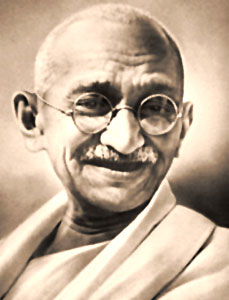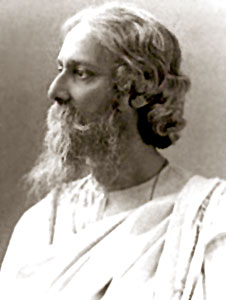 The coinage `revolt` always comes to one`s mind associated with insurgencies, unrests, reckless crusades, surreptitious endeavours or just revolting in a rebellious note. And revolts in India are something that every Indian is absolutely acquainted with. It is universally recognised that since ancient Indian times, the country had stayed a mute witness to umpteen and uncountable revolts and invasions, post the Indus Valley Civilization. The Ancient Age or the Stone Age was one that had paved way for western and Persian civilisations to establish their sight upon India, laden with mysterious gifts and fineries, mysticisms, prowess and everything occult. This very tempting theory was carried on to Aryan invasion into India that had paved way for significant succession of Indian humanity to evolve still to this date. The Middle Ages, with the advent of Islamic rule with the Slave Dynasty, the Tughlaqs or the Lodis, culminated with Mughal rule establishment in India, once more profoundly altering the course of residing natives and its society. As such, Indian revolts was not much thing of innovation or awe, with every ruler and their subjects preparing themselves against sudden attacks and incursions, some with triumphant end-results, some the contrary, Yet, as is presently and truly accepted of what is termed as `revolts in India`, was horrifically ushered in by the British Empire during their early advent by sea during mid-1600s, the intention of whom had changed massively with time. The trade-makers had gradually and cleverly grounded themselves as nepotist rulers and colonialists, with the rulers turning into the ruled.
The coinage `revolt` always comes to one`s mind associated with insurgencies, unrests, reckless crusades, surreptitious endeavours or just revolting in a rebellious note. And revolts in India are something that every Indian is absolutely acquainted with. It is universally recognised that since ancient Indian times, the country had stayed a mute witness to umpteen and uncountable revolts and invasions, post the Indus Valley Civilization. The Ancient Age or the Stone Age was one that had paved way for western and Persian civilisations to establish their sight upon India, laden with mysterious gifts and fineries, mysticisms, prowess and everything occult. This very tempting theory was carried on to Aryan invasion into India that had paved way for significant succession of Indian humanity to evolve still to this date. The Middle Ages, with the advent of Islamic rule with the Slave Dynasty, the Tughlaqs or the Lodis, culminated with Mughal rule establishment in India, once more profoundly altering the course of residing natives and its society. As such, Indian revolts was not much thing of innovation or awe, with every ruler and their subjects preparing themselves against sudden attacks and incursions, some with triumphant end-results, some the contrary, Yet, as is presently and truly accepted of what is termed as `revolts in India`, was horrifically ushered in by the British Empire during their early advent by sea during mid-1600s, the intention of whom had changed massively with time. The trade-makers had gradually and cleverly grounded themselves as nepotist rulers and colonialists, with the rulers turning into the ruled.
The foundation of British Empire with the help of East India Company and its administratives would perhaps never had been possible if the Mughals had not come to their aid. However, this very friendly and welcoming scenario took on a dark shape as English governors slowly but steadily made their intentions known to the public, who were at first dumbfounded by such an output. Never did any western civilisation come with such a purpose and overwhelm its masses by robbing of every pride and respectfulness. With gradual passage of eras occurred the Battle of Plassey and the Battle of Buxar, testifying Indian resentment against foreign supremacy, that too unwontedly. Revolts in India had started happening once more, after a prolonged time of silence, with the now-epitomised great Revolt of 1857, or Sepoy Mutiny earning the title of First Battle of Indian Independence. Such absolute unity and integrity amongst every native against the imperialists had for the consistent 200 years time-period unnerved every Viceroy of Governor-General, the wrath of which had come down upon fighters time and again.
 British colonialists had indeed taken over the Indian context of daily life, beginning perhaps from foodstuff and cooking and ending in technological improvements. Yet, the overpowering fact that is agreed is that the Englishmen had indeed inflicted such amount of pain and blood, that their good deeds have forever been overshadowed. They had mercilessly snatched people`s homes, clothes, job and placed them on the streets. Such uncountable actions called for ceaseless revolts, which started taking place every hour and every day during the late 1800s and all the way till 1947. Indian revolted against oppressive policies in administration, favouritism in the judicial and legislative sectors, business transactions, religious rituals and ceremonies; the list is almost uncountable. In this regard, the indigo planters and their masters stood at loggerheads each time the culminating time arrived for proper payment. This had led to the Bengal Indigo Cultivators Revolt in 1860. The maritime cities like Bombay, Calcutta and Madras, also including Delhi had seized political importance, leading to the birth thinking minds on both the warring sides. Freedom fighters or `revolting gentlemen` joined in unanimously from all ages and walks of life, which was witnessed to intensify after the beginning of 20th century. Partition of Bengal was welcomed in a sour note, in 1905, as was the gory Jalianwalabagh Amritsar massacre in 1919.
British colonialists had indeed taken over the Indian context of daily life, beginning perhaps from foodstuff and cooking and ending in technological improvements. Yet, the overpowering fact that is agreed is that the Englishmen had indeed inflicted such amount of pain and blood, that their good deeds have forever been overshadowed. They had mercilessly snatched people`s homes, clothes, job and placed them on the streets. Such uncountable actions called for ceaseless revolts, which started taking place every hour and every day during the late 1800s and all the way till 1947. Indian revolted against oppressive policies in administration, favouritism in the judicial and legislative sectors, business transactions, religious rituals and ceremonies; the list is almost uncountable. In this regard, the indigo planters and their masters stood at loggerheads each time the culminating time arrived for proper payment. This had led to the Bengal Indigo Cultivators Revolt in 1860. The maritime cities like Bombay, Calcutta and Madras, also including Delhi had seized political importance, leading to the birth thinking minds on both the warring sides. Freedom fighters or `revolting gentlemen` joined in unanimously from all ages and walks of life, which was witnessed to intensify after the beginning of 20th century. Partition of Bengal was welcomed in a sour note, in 1905, as was the gory Jalianwalabagh Amritsar massacre in 1919.
Indian revolts and revolting occurrences in the country can significantly be divided into phases, with distinctive codes being added with each passing decade. Commencing with the erstwhile era of Company rule, it had moved on to nationalists movements, which kept on altering with men like Netaji Subhash Chandra Bose, Mahatma Gandhi, Rabindranath Tagore, Bhagat Singh, Chandra Shekhar Azad, Sukhdev, Rajguru, Bagha Jatin, Surya Sen, Veer Savarkar, Raja Ram Mohan Roy or `Lal Bal Pal`. Swaraj was not attained in a day, with religious factions sometimes asserting their religious principles to shoo away the British. Mopla Revolt in 1921, or the various and extremely stringent acts that were formulated overnight were masterminded by pitiless rulers like Lord Dalhousie, Warren Hastings, General Dyer, Lord Curzon or Lord Canning. These acts came into place out of the blue, only to restrain such intimidating revolts in India, manifesting English foolishness, Revolts and nationalists could never be browbeaten, who went on fearlessly demonstrating national freedom by laying down lives and blood.
With gradual passage towards 15th August 1947, coupled with establishment of the Indian National Congress and crusades like Swadeshi Movement or Non Co-operation Movement, the imperialists possibly had grasped the point that their time was up; nothing much could be accomplished any more with passing of laws. Dandi March for Satyagraha by Gandhiji and the Revolt of 1942 brought this very assumption to a full circle. This wrapped up British Indian revolts perhaps forever, however still keeping a snag in the form of Partition of India and division of Hindus and Muslims.






































